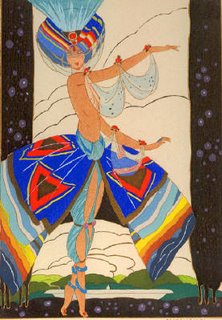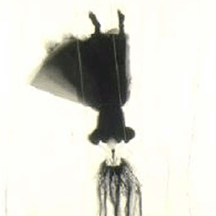Orientalism
Orientalism specifically describe a fashion trend in the first decades of the twentieth century but the word generally refers to all different kinds of phenomenon that involve Western (American and European, especially) interpretations of Eastern cultures that are often very imaginary, stereotypical, and based on ideas of western superiority.
Orientalism, as a concept of "what is the East" is as old as "what is the West." To put another way, the barbarian is invented by the civilized as a way of distinguishing themselves.
At any rate, the import of textiles and other commodities from the East dates back to the silk road and the very formation of Europe itself. Over the centuries its vogue had surged and ebbed with the fashions of the times and the exploits of explorers and empire builders.
The West's conceptions of “the orient” are not exclusive limited to Asia but extend to many other areas of the globe including the middle east, the south Pacific, parts of Africa, classical Greece and ancient Egypt, and even parts of Eastern Europe. The larger fascination with “ethnic” styles included orientalist styles, all “folk” cultures, and what was considered “primitive”cultures (i.e., anything not European).
 Resources
ResourcesOrientalism is not something that only happened in the past. It is as alive and well today as it ever was. For more information, especially as it relates to the important book by Edward Said (Orientalism, New York: Vintage, 1979) you can start with these resources:
1. start here for a general overview
2. then go here for a discussion of the term as used in Said’s book



3 comments:
i'm delighted to find your blog! we seem to have similar tastes and interests! i love the choics you've made of images--some are new to me so thanks!
Lovely blog. Visually stunning. Content is fabulous.
Hm...your description seems pretty self-righteous. Those who used orientalist aesthetics did not think of all Eastern cultures as "primitive"--there was respect, even awe, often, for the products of cultures such as Persia, Japan, and China. While of course it is very important to recognize that the "other" was a convenience that often had little to do with the actual realities or aesthetics of those cultures, I think it is arrogant to presume that artists were not aware of the fact that they were modifying the aesthetics of those cultures for their own purposes.
Post a Comment